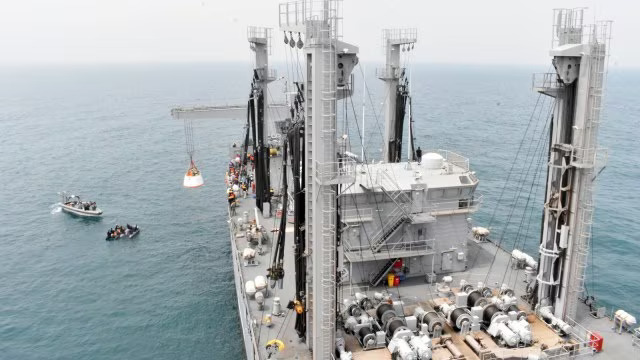To keep Gaganyaan crew module upright after splashdown, ISRO plans tests in 2024
-
by cobra_admin
- 69
The TV-D1 mission was part of preparations for ISRO’s first human spaceflight Gaganyaan mission scheduled in 2024-25.

The Indian Space Research Organisation (ISRO) will conduct an experiment in a crew module to ensure it remains upright after splashing down in the sea.
The basic crew module in the TV-D1 mission on October 21 this year turned upside down while being recovered by naval divers in the Bay of Bengal. The TV-D1 mission was part of preparations for ISRO’s first human spaceflight Gaganyaan mission scheduled in 2024-25.
The uprighting system is among multiple systems to be tested during the second test mission (TV-D2) scheduled next year before a full-fledged unmanned test flight into space for the crew module on the LVM3 rocket part of the Gaganyaan mission, said TV-D1 mission director S Sivakumar.
“The two stable positions are upright and upside down. Now, to avoid the upside-down situation in the real crew module, there will be an uprighting system that will be like gaseous balloons – similar to airbags in cars,” Sivakumar said.
“If the crew module is going to topple, the balloon system will restore the upright position. In this particular crew module, we wanted to see if it could remain stable. We found that when there is a lateral wind and disturbance due to sea waves it becomes unstable, and so it was near an upside-down position,” he said.
The crew module will also have redundancy systems to compensate for the failure of the primary crew module uprighting system, he said. “The recovery aids like the beacons had to work well underwater and the sea water dye should get ejected to mark the region of the landing,” he said.
“We are targeting the next test vehicle mission sometime in the first quarter of next year. The crew module with the control systems will simulate crew seat systems and suspension systems, the uprighting system etc. Also in the crew escape system we will use both low and high altitude escape motors unlike in D1 where we have used only the high altitude escape motors,” Sivakumar said.
Sivakumar said that the first test of the crew module and crew escape system in the TV D1 mission has been deemed a success although all “three elements — the test vehicle, the crew escape system and the crew module are new.”
The TV-D1 mission’s biggest success was the deployment at a desired angle of the drogue chutes (which bring the crew module from a height of 17 km at a speed of 150m/sec to a height of 2.5 km from the surface of the sea at a speed of 63 m/sec) after the release of crew module from the escape system, he said
“We have tried to generate some fundamental data. All the parachutes and crew escape system are newly designed for Gaganyaan,” said Sivakumar. After the TV-D1 mission, a second demonstration flight next year will involve a crew module that would more closely simulate the final one. “We will be simulating the crew seats, control and floatation system etc in the test vehicle D2 next year,” he said.
The TV-D1 mission was part of preparations for ISRO’s first human spaceflight Gaganyaan mission scheduled in 2024-25. The Indian Space Research Organisation (ISRO) will conduct an experiment in a crew module to ensure it remains upright after splashing down in the sea. The basic crew module in the TV-D1 mission…
The TV-D1 mission was part of preparations for ISRO’s first human spaceflight Gaganyaan mission scheduled in 2024-25. The Indian Space Research Organisation (ISRO) will conduct an experiment in a crew module to ensure it remains upright after splashing down in the sea. The basic crew module in the TV-D1 mission…